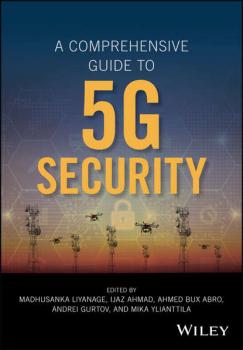Andrei Gurtov
Список книг автора Andrei GurtovHost Identity Protocol (HIP)
“Within the set of many identifier-locator separation designs for the Internet, HIP has progressed further than anything else we have so far. It is time to see what HIP can do in larger scale in the real world. In order to make that happen, the world needs a HIP book, and now we have it.” – Jari Arkko, Internet Area Director, IETF One of the challenges facing the current Internet architecture is the incorporation of mobile and multi-homed terminals (hosts), and an overall lack of protection against Denial-of-Service attacks and identity spoofing. The Host Identity Protocol (HIP) is being developed by the Internet Engineering Task Force (IETF) as an integrated solution to these problems. The book presents a well-structured, readable and compact overview of the core protocol with relevant extensions to the Internet architecture and infrastructure. The covered topics include the Bound End-to-End Tunnel Mode for IPsec, Overlay Routable Cryptographic Hash Identifiers, extensions to the Domain Name System, IPv4 and IPv6 interoperability, integration with SIP, and support for legacy applications. Unique features of the book: All-in-one source for HIP specifications Complete coverage of HIP architecture and protocols Base exchange, mobility and multihoming extensions Practical snapshots of protocol operation IP security on lightweight devices Traversal of middleboxes, such as NATs and firewalls Name resolution infrastructure Micromobility, multicast, privacy extensions Chapter on applications, including HIP pilot deployment in a Boeing factory HOWTO for HIP on Linux (HIPL) implementation An important compliment to the official IETF specifications, this book will be a valuable reference for practicing engineers in equipment manufacturing companies and telecom operators, as well as network managers, network engineers, network operators and telecom engineers. Advanced students and academics, IT managers, professionals and operating system specialists will also find this book of interest.
A Comprehensive Guide to 5G Security
The first comprehensive guide to the design and implementation of security in 5G wireless networks and devices Security models for 3G and 4G networks based on Universal SIM cards worked very well. But they are not fully applicable to the unique security requirements of 5G networks. 5G will face additional challenges due to increased user privacy concerns, new trust and service models and requirements to support IoT and mission-critical applications. While multiple books already exist on 5G, this is the first to focus exclusively on security for the emerging 5G ecosystem. 5G networks are not only expected to be faster, but provide a backbone for many new services, such as IoT and the Industrial Internet. Those services will provide connectivity for everything from autonomous cars and UAVs to remote health monitoring through body-attached sensors, smart logistics through item tracking to remote diagnostics and preventive maintenance of equipment. Most services will be integrated with Cloud computing and novel concepts, such as mobile edge computing, which will require smooth and transparent communications between user devices, data centers and operator networks. Featuring contributions from an international team of experts at the forefront of 5G system design and security, this book: Provides priceless insights into the current and future threats to mobile networks and mechanisms to protect it Covers critical lifecycle functions and stages of 5G security and how to build an effective security architecture for 5G based mobile networks Addresses mobile network security based on network-centricity, device-centricity, information-centricity and people-centricity views Explores security considerations for all relative stakeholders of mobile networks, including mobile network operators, mobile network virtual operators, mobile users, wireless users, Internet-of things, and cybersecurity experts Providing a comprehensive guide to state-of-the-art in 5G security theory and practice, A Comprehensive Guide to 5G Security is an important working resource for researchers, engineers and business professionals working on 5G development and deployment.
Software Defined Mobile Networks (SDMN). Beyond LTE Network Architecture
This book describes the concept of a Software Defined Mobile Network (SDMN), which will impact the network architecture of current LTE (3GPP) networks. SDN will also open up new opportunities for traffic, resource and mobility management, as well as impose new challenges on network security. Therefore, the book addresses the main affected areas such as traffic, resource and mobility management, virtualized traffics transportation, network management, network security and techno economic concepts. Moreover, a complete introduction to SDN and SDMN concepts. Furthermore, the reader will be introduced to cutting-edge knowledge in areas such as network virtualization, as well as SDN concepts relevant to next generation mobile networks. Finally, by the end of the book the reader will be familiar with the feasibility and opportunities of SDMN concepts, and will be able to evaluate the limits of performance and scalability of these new technologies while applying them to mobile broadb and networks.


